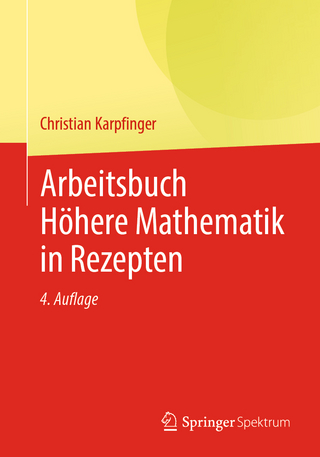
Hybrid Feedback Control
Seiten
2021
Princeton University Press (Verlag)
978-0-691-18022-9 (ISBN)
Princeton University Press (Verlag)
978-0-691-18022-9 (ISBN)
A comprehensive introduction to hybrid control systems and designHybrid control systems exhibit both discrete changes, or jumps, and continuous changes, or flow. An example of a hybrid control system is the automatic control of the temperature in a room: the temperature changes continuously, but the control algorithm toggles the heater on or of
A comprehensive introduction to hybrid control systems and design
Hybrid control systems exhibit both discrete changes, or jumps, and continuous changes, or flow. An example of a hybrid control system is the automatic control of the temperature in a room: the temperature changes continuously, but the control algorithm toggles the heater on or off intermittently, triggering a discrete jump within the algorithm. Hybrid control systems feature widely across disciplines, including biology, computer science, and engineering, and examples range from the control of cellular responses to self-driving cars. Although classical control theory provides powerful tools for analyzing systems that exhibit either flow or jumps, it is ill-equipped to handle hybrid control systems.
In Hybrid Feedback Control, Ricardo Sanfelice presents a self-contained introduction to hybrid control systems and develops new tools for their analysis and design. Hybrid behavior can occur in one or more subsystems of a feedback system, and Sanfelice offers a unified control theory framework, filling an important gap in the control theory literature. In addition to the theoretical framework, he includes a plethora of examples and exercises, a Matlab toolbox (as well as two open-source versions), and an insightful overview at the beginning of each chapter.
Relevant to dynamical systems theory, applied mathematics, and computer science, Hybrid Feedback Control will be useful to students and researchers working on hybrid systems, cyber-physical systems, control, and automation.
A comprehensive introduction to hybrid control systems and design
Hybrid control systems exhibit both discrete changes, or jumps, and continuous changes, or flow. An example of a hybrid control system is the automatic control of the temperature in a room: the temperature changes continuously, but the control algorithm toggles the heater on or off intermittently, triggering a discrete jump within the algorithm. Hybrid control systems feature widely across disciplines, including biology, computer science, and engineering, and examples range from the control of cellular responses to self-driving cars. Although classical control theory provides powerful tools for analyzing systems that exhibit either flow or jumps, it is ill-equipped to handle hybrid control systems.
In Hybrid Feedback Control, Ricardo Sanfelice presents a self-contained introduction to hybrid control systems and develops new tools for their analysis and design. Hybrid behavior can occur in one or more subsystems of a feedback system, and Sanfelice offers a unified control theory framework, filling an important gap in the control theory literature. In addition to the theoretical framework, he includes a plethora of examples and exercises, a Matlab toolbox (as well as two open-source versions), and an insightful overview at the beginning of each chapter.
Relevant to dynamical systems theory, applied mathematics, and computer science, Hybrid Feedback Control will be useful to students and researchers working on hybrid systems, cyber-physical systems, control, and automation.
Ricardo G. Sanfelice is professor of electrical and computer engineering at the University of California, Santa Cruz. He is the coauthor of Hybrid Dynamical Systems (Princeton).
| Erscheinungsdatum | 25.02.2021 |
|---|---|
| Zusatzinfo | 78 b/w illus. 1 table. |
| Verlagsort | New Jersey |
| Sprache | englisch |
| Maße | 178 x 254 mm |
| Themenwelt | Mathematik / Informatik ► Mathematik ► Algebra |
| Mathematik / Informatik ► Mathematik ► Angewandte Mathematik | |
| Technik | |
| ISBN-10 | 0-691-18022-9 / 0691180229 |
| ISBN-13 | 978-0-691-18022-9 / 9780691180229 |
| Zustand | Neuware |
| Informationen gemäß Produktsicherheitsverordnung (GPSR) | |
| Haben Sie eine Frage zum Produkt? |
Mehr entdecken
aus dem Bereich
aus dem Bereich
Mathematik von Studierenden für Studierende erklärt und kommentiert
Buch (2024)
Springer Spektrum (Verlag)
34,99 €
Buch | Softcover (2022)
Springer Spektrum (Verlag)
39,99 €


